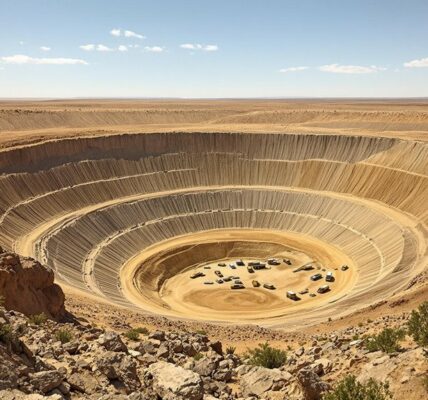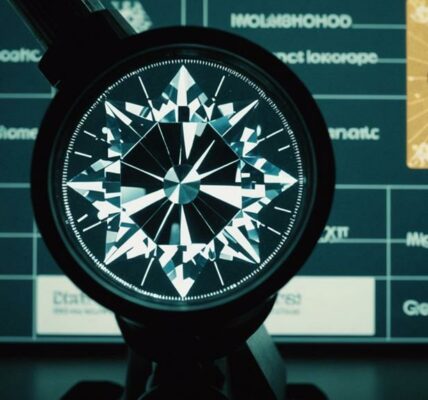G7’s Russian Diamond Restrictions: India Navigating the Shifting Landscape of the Global Diamond Trade
December 7, 2023
In a world where the sparkle of diamonds often overshadows the complexities of their trade, recent developments involving the Group of Seven’s (G7) restrictions on Russian-origin diamonds have brought a new dimension to the global gem and jewellery industry. The Gem & Jewellery Export Promotion Council (GJEPC) of India, a pivotal player in this market, has expressed concerns and sought flexibility regarding the implementation of these restrictions.
Article Contents
- 1 India’s Central Role in the Global Diamond Industry
- 2 Concerns and Calls for Flexibility
- 3 Impact on Small and Marginal Diamond Units
- 4 Global Perspectives and the Antwerp Factor
- 5 The Road Ahead
- 6 FAQ on G7’s Russian Diamond Restrictions and Global Diamond Trade Impact
- 6.1 What are the new restrictions imposed by the G7 on Russian diamonds?
- 6.2 How will these restrictions affect the global diamond industry?
- 6.3 Does the ban include all types of diamonds?
- 6.4 What is the role of Belgium in this context?
- 6.5 What are the concerns raised by the Indian diamond industry?
- 6.6 Will there be a mechanism for verifying the origin of diamonds?
- 6.7 Share this:
- 6.8 Like this:
India’s Central Role in the Global Diamond Industry
India, accounting for 90% of the world’s diamond cutting and polishing, stands at the forefront of this industry. The GJEPC, under the direction of Chairman Vipul Shah, has expressed its concern regarding the G7’s decision to impose direct import restrictions on diamonds of Russian origin beginning January 1, 2024, and on diamonds processed by third countries beginning March 1, 2024.
While respecting the G7’s decision, we would like more details on how such decisions will be implemented. We have questions about what is meant by a major rough diamond importer in the G7 and the powers it will have in determining the compliance of Indian diamond exports to the G7.
Vipul Shah, Chairman, GJEPC

Concerns and Calls for Flexibility
Vipul Shah has highlighted the Indian Gems and Jewellery trade’s reservations regarding the timelines for these restrictions. Recognizing the industry’s diversity, the GJEPC is advocating for more flexibility in these timelines. The council is also seeking more details on the implementation of these decisions, particularly concerning the compliance of Indian diamond exports to the G7 countries.
Impact on Small and Marginal Diamond Units
The GJEPC has emphasized the need to consider the interests of Small and Medium Enterprises (SMEs) and marginal diamond units, which contribute significantly to the industry and support millions of livelihoods.
We are happy to note that the G7 will remain engaged with us as diamond manufacturers. GJEPC will strongly advocate that when regulating the sanctions the interests of SMEs and marginal diamond units should be kept in mind, recognizing their active contribution to this industry and the millions of livelihoods which are dependent on it. We will also be discussing with WDC and aligning all stakeholders to ensure that their businesses are not disrupted. GJEPC believes that the new G7 diamond import regulations should be fair and inclusive, taking into account the diverse range of stakeholders within the diamond industry. We will work closely with our members and partners to provide input and feedback on the development of these regulations, ensuring that they support a sustainable and responsible diamond trade. It is crucial that the regulations are implemented in a way that supports the growth and prosperity of the industry, while also upholding the highest ethical and environmental standards.
Vipul Shah, Chairman, GJEPC
Global Perspectives and the Antwerp Factor
De Beers, a top global rough diamond producer, shares India’s concerns. The plan to channel the G7’s imports via Belgium, particularly through Antwerp, the world’s main diamond hub, may create supply chain bottlenecks and additional costs, potentially hampering African production’s access to the G7 markets. This approach raises questions about how the country of origin of diamonds should be verified and where this verification should take place.
If the intent is to apply a purely technological certification system and to channel all rough imports to the G7 through Belgium, this will be to the detriment of responsible African producers, to all those who depend on the artisanal mining sector, and to the wider industry
De Beers
The Road Ahead
As the industry navigates these turbulent waters, the GJEPC continues to make representations to the Indian Government, confident in the leadership’s ability to safeguard the interests of the Indian trade. The GJEPC’s stance and the ensuing discussions with the G7 and other stakeholders, like the World Diamond Council, are pivotal in shaping the future of the global diamond trade amid evolving geopolitical landscapes.
FAQ on G7’s Russian Diamond Restrictions and Global Diamond Trade Impact
What are the new restrictions imposed by the G7 on Russian diamonds?
The Group of Seven (G7) countries have announced a direct ban on Russian diamonds starting January 1, 2024. From around March 1, 2024, there will be gradual restrictions on the indirect importation of Russian gems. The ban is part of a coordinated effort to restrict the import of Russian diamonds.
How will these restrictions affect the global diamond industry?
The restrictions could have significant implications for the global diamond industry, particularly for countries like India, which is home to a major portion of the world’s diamond-cutting and polishing sector. India’s Gem & Jewellery Export Promotion Council (GJEPC) is seeking flexibility in the implementation of these restrictions due to their potential impact on small and medium diamond businesses.
Does the ban include all types of diamonds?
The ban excludes diamonds intended for industrial use. However, it does not currently include the tracing of polished stones. By September 1, 2024, the G7 will introduce a robust traceability-based verification and certification mechanism with a primary focus on rough diamonds.
What is the role of Belgium in this context?
Belgium, particularly Antwerp, is a central hub in the global diamond trade, with most of the world’s rough diamonds transiting through the city. The Belgian government has proposed a traceability system as part of the G7’s initiative, aiming to enhance the Antwerp diamond sector’s role as a trading centre for ‘clean’ diamonds. This proposal aligns with Belgium’s ongoing efforts against blood diamonds.
What are the concerns raised by the Indian diamond industry?
The Indian diamond industry, represented by the GJEPC, has expressed concerns about the timelines for the implementation of the G7’s restrictions. They argue for more flexibility, considering the diverse nature of the industry and the potential disruptions that might affect small and marginal diamond units, which are crucial for millions of livelihoods in India.
Will there be a mechanism for verifying the origin of diamonds?
Yes, the G7 plans to introduce a traceability-based verification and certification mechanism for rough diamonds by September 1, 2024. This system aims to ensure that diamonds imported into the G7 countries can be traced back to their origins, thereby complying with the new restrictions.
Article Source References
- G7 leaders agree to restrict imports of Russian diamonds
- GJEPC India seeks flexibility on timing of implementation of import restrictions on Russian-origin diamonds
- G7 to phase in direct, indirect bans of Russian diamonds from Jan. 1







2 COMMENTS